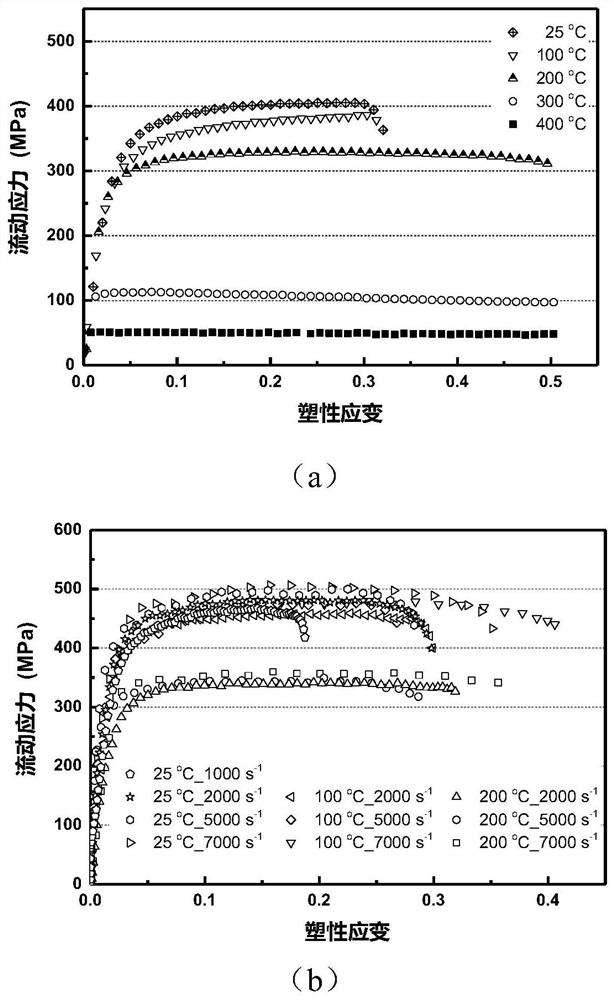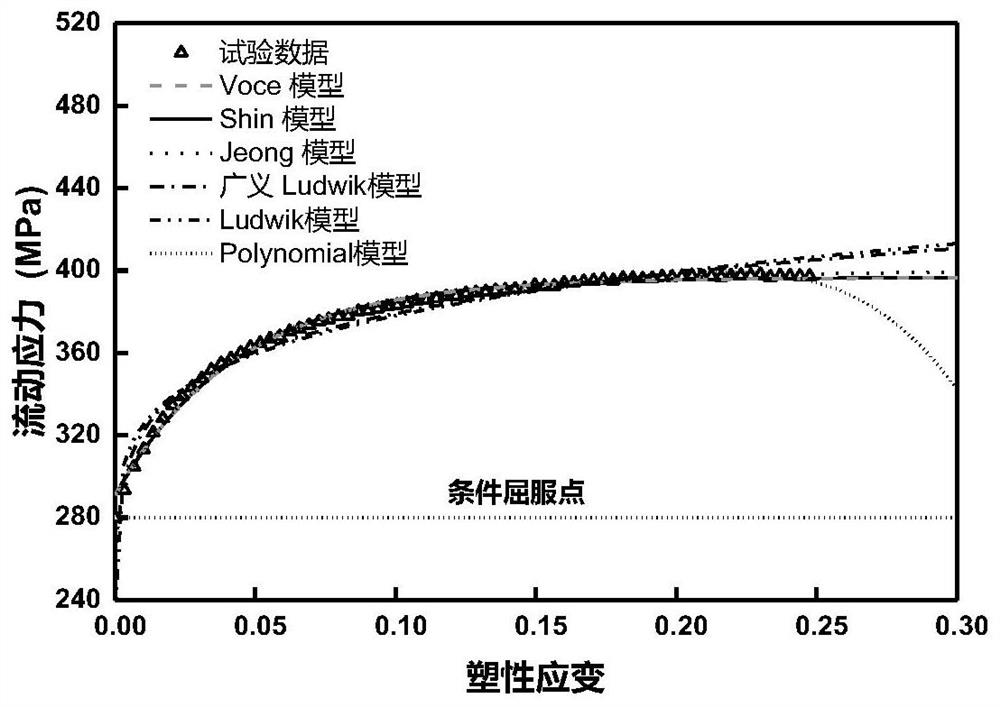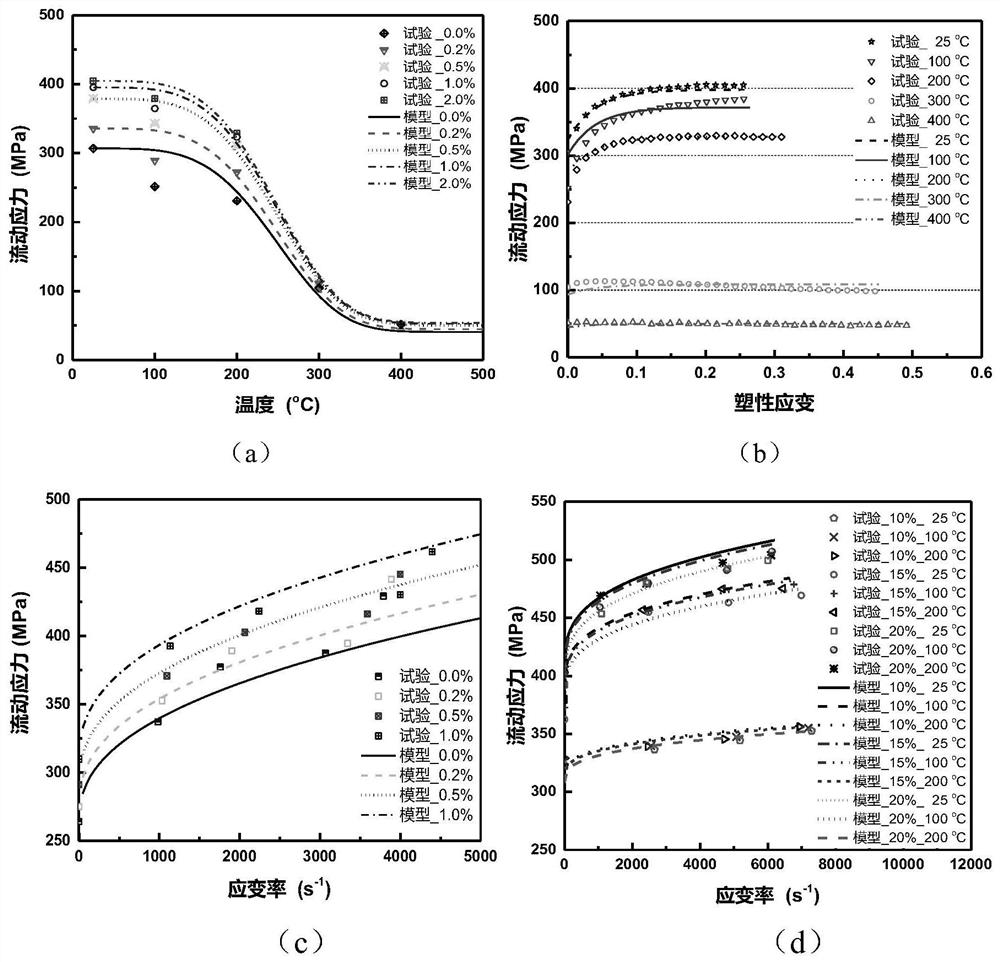A Multi-objective Optimization Method Based on Dependency-Based Integrated Phenomenological Constitutive
A multi-objective optimization and dependency technology, applied in the fields of material mechanical properties characterization, mechanical manufacturing and numerical analysis, it can solve problems such as increasing difficulty in determination, difficulty in defining coupling relationships, and increasing number of material parameters for characterization of constitutive models.
- Summary
- Abstract
- Description
- Claims
- Application Information
AI Technical Summary
Problems solved by technology
Method used
Image
Examples
Embodiment 1
[0143] The test material is a silicon carbide reinforced aluminum matrix composite material with a volume ratio of 15%. The quasi-static and dynamic mechanical tests were performed on the Gleeble 3500 thermal simulator and the SHPB device, respectively. Gleeble thermal simulation experiment is heated to the specified forming temperature at a rate of 4°C / s in vacuum, and then kept at the forming temperature for three minutes, with a rate of 0.001s -1 Compression tests were carried out at the strain rates, and the test forming temperatures were 25, 100, 200, 300 and 400 °C. SHPB test conditions: nominal forming temperature is 25°C, 100°C, 200°C, nominal strain rate is 1000, 2000s -1 , 5000s -1 and 7000s -1 . figure 1 (a) and figure 1 (b) Quasi-static and dynamic mechanical test data obtained for Gleeble test and dynamic SHPB test, respectively.
[0144] Such as Figure 5 As shown, a dependency-based integrated phenomenological constitutive multi-objective optimization met...
PUM
 Login to View More
Login to View More Abstract
Description
Claims
Application Information
 Login to View More
Login to View More - R&D
- Intellectual Property
- Life Sciences
- Materials
- Tech Scout
- Unparalleled Data Quality
- Higher Quality Content
- 60% Fewer Hallucinations
Browse by: Latest US Patents, China's latest patents, Technical Efficacy Thesaurus, Application Domain, Technology Topic, Popular Technical Reports.
© 2025 PatSnap. All rights reserved.Legal|Privacy policy|Modern Slavery Act Transparency Statement|Sitemap|About US| Contact US: help@patsnap.com



